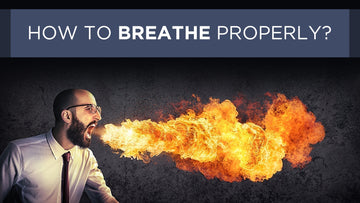CO2 helps filter the blood
Controlled hyperventilation, isocapnic hyperpnea in medical terms, means that extra CO2 is added to the inhaled air and it is a way to enhance the lungs blood filtering capacity, without the negative effects of normal hyperventilation.
Here are some examples of when we can benefit from recruiting the lungs to enhance our ability to filter the blood:
CARBON MONOXIDE POISONING
Exposure to carbon monoxide (CO) is among the most common causes of poisonings worldwide. CO has 200 to 250 times greater affinity than oxygen for hemoglobin, and therefore impairs the delivery of oxygen to the tissues. The crucial treatment goal in CO poisonings is to eliminate CO from the body as fast as possible.
Study #1 below showed that controlled hyperventilation with CO2 more than doubles the rate of CO elimination compared to the standard treatment, which is normal ventilation with 100% oxygen.
ALCOHOL INTOXICATION
Alcohol intoxication is endemic worldwide with severe health consequences. Already a century ago it was discovered that the alcohol levels in exhaled air is in direct proportion to the blood concentration and breathing volume per minute. The authors, in study #1 below, demonstrated that faster and bigger breaths was an efficient way to sober up faster. A more recent study, #2 below, showed that controlled hyperventilation with CO2 made the participants sober up more than three times as fast.
RECOVERY AFTER ANESTHESIA
Isocapnic hyperventilation (IHV) provides an effective technique for weaning from inhalation anaesthesia by maintaining normal alveolar/arterial CO2 levels during hyperventilation (HV), which markedly decreases the time to eyeopening, extubation and time spent in the post-operative care unit.








